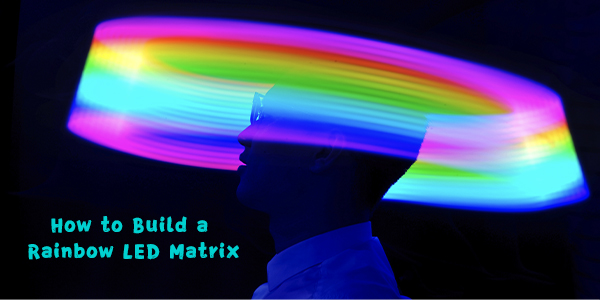🐰Happy Easter Day🐰Shop now with up to 30% off sitewide.
Menu



WS2812 rainbow lamp is a very commonly used electronic material by makers. Its colorful luminous characteristic is deeply loved by everyone, but they are sold mostly in bare PCBA in the market. The beads without any obstruction gives out dazzling light to us. Thus, I will make a rainbow light panel with a soft light.
8×8 Matrix Rainbow LED x 2
3D Printings Light Guide Groove
Acrylic Boards
The spectacular feature of WS2812b rainbow LED beads is that only 1 IO can control the colors of all lamp beads. For a detailed introduction, please refer to this blog: Get to Know WS2812b
Step 1
Build a model for the Rainbow LED panel, any 3D design software is working, here I am using Rhino 7.0.
The size of the beads, the spacing, and the location of the fixing holes must be measured accurately, which will directly affect the assembly accuracy.
Step 2
Design the light guide groove and the acrylic shells.
Step 3
The light guide groove is 3D printed, the materials I am using here is in black. The role of the mask is very important, it can make the light emitted by each bead very distinct rather than mixed into a ball, retaining the “pixel sense” of each bead.
Step 4
The acrylic shell is cut out by laser, and the acrylic on the surface is made of milky white frosted material. This is very important because it gives a soft light effect.
Step 5
Welding and assembly.
Go to http://microbit.makecode.org. For programming, we need to add a package: click “Extensions” at the bottom of the MakeCode drawer and search with `neopixel` in the dialogue box to download it.
Here we just write an example of a rainbow lamp:
Place it as a decoration on the desk and make the color change with your mood.
Use it as a photography prop to achieve the effect of light painting.
Make a sound detector and let it move with the music.
In addition, I can also think of using it to make automatic car lights, human body induction night lights, and even use it as a screen to display text or symbols. In a word, it can achieve a lot of changes and have a lot of usages. In the future, I will organize and open source the STL files of the light guide groove and the acrylic CAD files for everyone to download. If you are also interested in this, welcome to participate in the production and discussion.
Stay up-to-date with our latest promotions,discounts,sales,and special offers.